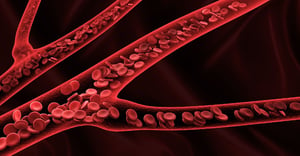Share this
tacrolimus monitoring: how to improve your patients' experience
by Neoteryx Microsampling on Jul 9, 2019 7:09:00 AM
 Capillary blood microsampling is a technique that has made collection and analysis of small, exact volumes of liquid matrices much simpler. Through capillary blood microsampling, tacrolimus monitoring has potentially become more patient-centered. Here's why you should consider blood microsampling when it comes to tacrolimus monitoring to create a better patient experience.
Capillary blood microsampling is a technique that has made collection and analysis of small, exact volumes of liquid matrices much simpler. Through capillary blood microsampling, tacrolimus monitoring has potentially become more patient-centered. Here's why you should consider blood microsampling when it comes to tacrolimus monitoring to create a better patient experience.
- Tacrolimus is the backbone to immunosuppression for most organ transplant patients. Tacrolimus levels should neither be too high or too low, but precisely right. Monitoring is easier through blood microsampling as it is less painful and stressful and collects samples with more precision than similar older technologies such as DBS cards.
- Patient-centered tacrolimus monitoring is all about providing care, which is responsive to individual patient preferences. Capillary blood micro sampling makes that possible since the process allows for home sampling. Patients get to give a required amount of blood (or another biological fluid) within a dosing interval without setting foot at the hospital.
- With the use of immunosuppression for patients, it is very important to monitor the levels of tacrolimus. This is because it affects the blood volume level, which is important to maintain. Capillary blood microsampling entails obtaining blood by skin puncture and thus avoids blood volume reduction.
- Capillary blood microsampling using Mitra® devices driven by VAMS™ is ideal for immunosuppressant monitoring. An immunosuppressant is any drug used to inhibit the natural immune system from fighting a transplanted organ. Application of these drugs requires consistent monitoring to ensure that it is in the right amount for treating the patient. Excess concentration can cause health complications, and too little can be ineffective. With microsampling, it is easy to monitor this while avoiding pain or tissue damage.
- Only a fixed sample is taken, enough to carry out any test in regards to immunosuppression. Therefore, there is no waste in sampling. The process is made easy for both patients and lab technicians through limited invasive blood collection techniques. The comfort for the patient is maintained as there is less pain which increases cooperation
Remote patient monitoring and capillary blood microsampling can even promote increased cooperation from patients. This is not only for those involved in tacrolimus monitoring but also in other procedures such as clinical trials, making blood microsampling a crucial player across the field of medicine.

Share this
- Microsampling (206)
- Research, Remote Research (119)
- Venipuncture Alternative (105)
- Clinical Trials, Clinical Research (83)
- Mitra® Device (73)
- Therapeutic Drug Monitoring, TDM (51)
- Dried Blood Spot, DBS (39)
- Biomonitoring, Health, Wellness (30)
- Infectious Disease, Vaccines, COVID-19 (24)
- Blood Microsampling, Serology (23)
- Omics, Multi-Omics (21)
- Decentralized Clinical Trial (DCT) (20)
- Specimen Collection (18)
- Toxicology, Doping, Drug/Alcohol Monitoring, PEth (17)
- Skin Microsampling, Microbiopsy (14)
- hemaPEN® Device (13)
- Preclinical Research, Animal Studies (12)
- Pharmaceuticals, Drug Development (9)
- Harpera Device (7)
- Industry News, Microsampling News (5)
- Antibodies, MAbs (3)
- Company Press Release, Product Press Release (3)
- Environmental Toxins, Exposures (1)
- July 2025 (1)
- May 2025 (1)
- April 2025 (2)
- December 2024 (2)
- November 2024 (1)
- October 2024 (3)
- September 2024 (1)
- June 2024 (1)
- May 2024 (1)
- April 2024 (4)
- March 2024 (1)
- February 2024 (2)
- January 2024 (4)
- December 2023 (3)
- November 2023 (3)
- October 2023 (3)
- September 2023 (3)
- July 2023 (3)
- June 2023 (2)
- April 2023 (2)
- March 2023 (2)
- February 2023 (2)
- January 2023 (3)
- December 2022 (2)
- November 2022 (3)
- October 2022 (4)
- September 2022 (3)
- August 2022 (5)
- July 2022 (2)
- June 2022 (2)
- May 2022 (4)
- April 2022 (3)
- March 2022 (3)
- February 2022 (4)
- January 2022 (5)
- December 2021 (3)
- November 2021 (5)
- October 2021 (3)
- September 2021 (3)
- August 2021 (4)
- July 2021 (4)
- June 2021 (4)
- May 2021 (4)
- April 2021 (3)
- March 2021 (5)
- February 2021 (4)
- January 2021 (4)
- December 2020 (3)
- November 2020 (5)
- October 2020 (4)
- September 2020 (3)
- August 2020 (3)
- July 2020 (6)
- June 2020 (4)
- May 2020 (4)
- April 2020 (3)
- March 2020 (6)
- February 2020 (3)
- January 2020 (4)
- December 2019 (5)
- November 2019 (4)
- October 2019 (2)
- September 2019 (4)
- August 2019 (4)
- July 2019 (3)
- June 2019 (7)
- May 2019 (6)
- April 2019 (5)
- March 2019 (6)
- February 2019 (5)
- January 2019 (8)
- December 2018 (3)
- November 2018 (4)
- October 2018 (7)
- September 2018 (6)
- August 2018 (5)
- July 2018 (8)
- June 2018 (6)
- May 2018 (5)
- April 2018 (6)
- March 2018 (4)
- February 2018 (6)
- January 2018 (4)
- December 2017 (2)
- November 2017 (3)
- October 2017 (2)
- September 2017 (4)
- August 2017 (2)
- July 2017 (4)
- June 2017 (5)
- May 2017 (6)
- April 2017 (6)
- March 2017 (5)
- February 2017 (4)
- January 2017 (1)
- July 2016 (3)
- May 2016 (1)
- April 2016 (2)


No Comments Yet
Let us know what you think